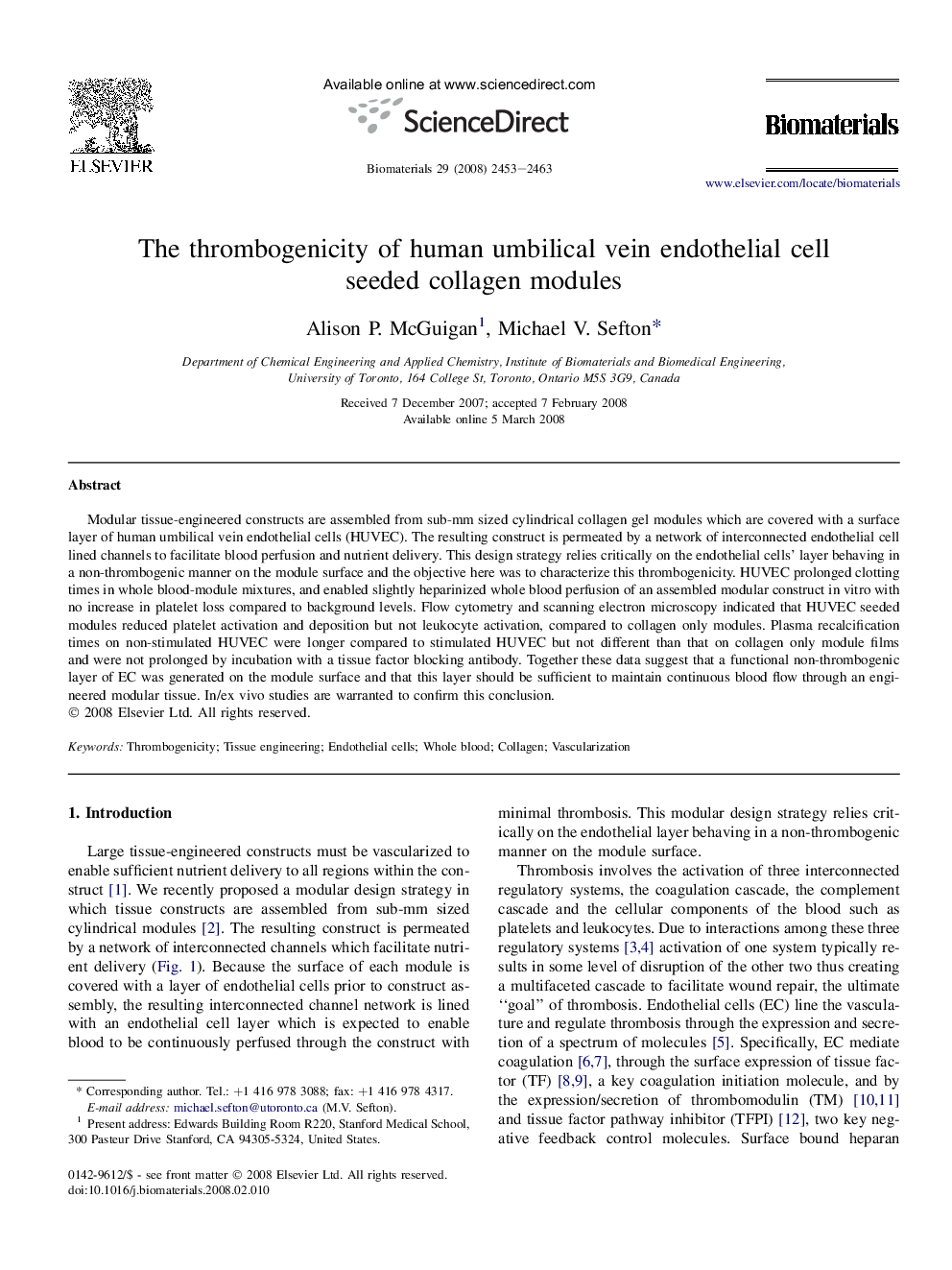| Article ID | Journal | Published Year | Pages | File Type |
|---|---|---|---|---|
| 10051 | Biomaterials | 2008 | 11 Pages |
Modular tissue-engineered constructs are assembled from sub-mm sized cylindrical collagen gel modules which are covered with a surface layer of human umbilical vein endothelial cells (HUVEC). The resulting construct is permeated by a network of interconnected endothelial cell lined channels to facilitate blood perfusion and nutrient delivery. This design strategy relies critically on the endothelial cells' layer behaving in a non-thrombogenic manner on the module surface and the objective here was to characterize this thrombogenicity. HUVEC prolonged clotting times in whole blood-module mixtures, and enabled slightly heparinized whole blood perfusion of an assembled modular construct in vitro with no increase in platelet loss compared to background levels. Flow cytometry and scanning electron microscopy indicated that HUVEC seeded modules reduced platelet activation and deposition but not leukocyte activation, compared to collagen only modules. Plasma recalcification times on non-stimulated HUVEC were longer compared to stimulated HUVEC but not different than that on collagen only module films and were not prolonged by incubation with a tissue factor blocking antibody. Together these data suggest that a functional non-thrombogenic layer of EC was generated on the module surface and that this layer should be sufficient to maintain continuous blood flow through an engineered modular tissue. In/ex vivo studies are warranted to confirm this conclusion.
